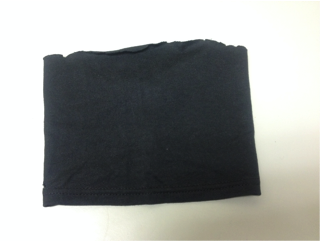
from #Audiology via ola Kala on Inoreader http://ift.tt/2DSu2mh
via IFTTT
OtoRhinoLaryngology by Sfakianakis G.Alexandros Sfakianakis G.Alexandros,Anapafseos 5 Agios Nikolaos 72100 Crete Greece,tel : 00302841026182,00306932607174


![]()
![]()
![]()

![]()
![]()
![]()

![]()
![]()
![]()
Seeking a quiet cafe to discuss business or chat with a friend? The new iHEARu mobile app can help.
The iHEARu mobile app uses crowd-sourcing to help individuals find locations with noise levels that suit your needs. Whether seeking a quiet eatery or lively bar with loud music, the iHEARu GPS will help you find it. By combining decibel data gathered from smartphone users in real-life environments, iHEARu provides the data to change the world…one ear-friendly place at a time.
Founded and inspired by world-renowned neuroscientists and audiologists from the University of Washington Dr. Kelly Tremblay and Dr. Charles Limb of the University of California, San Francisco (UCSF), the iHEARu app helps people collect decibel data in public spaces. The iHEARu team has partnered with the UCSF Sound and Music Perception Lab, headed by Dr. Limb, to help San Francisco's hearing-challenged community find ear-friendly places to visit. The team is calling on all citizen scientists to join the movement by downloading the free app and taking data readings across the city. For each data reading during Restaurant Week (January 22–31), the iHEARu team will make a contribution to the Hearing Loss Association of America and CHEFSGIVING.
Why create an ear-friendly movement? Consider:
The app can be downloaded for FREE via the App Store or Google Play. Learn more about iHearu from Dr. Tremblay's article .
Seeking a quiet cafe to discuss business or chat with a friend? The new iHEARu mobile app can help.
The iHEARu mobile app uses crowd-sourcing to help individuals find locations with noise levels that suit your needs. Whether seeking a quiet eatery or lively bar with loud music, the iHEARu GPS will help you find it. By combining decibel data gathered from smartphone users in real-life environments, iHEARu provides the data to change the world…one ear-friendly place at a time.
Founded and inspired by world-renowned neuroscientists and audiologists from the University of Washington Dr. Kelly Tremblay and Dr. Charles Limb of the University of California, San Francisco (UCSF), the iHEARu app helps people collect decibel data in public spaces. The iHEARu team has partnered with the UCSF Sound and Music Perception Lab, headed by Dr. Limb, to help San Francisco's hearing-challenged community find ear-friendly places to visit. The team is calling on all citizen scientists to join the movement by downloading the free app and taking data readings across the city. For each data reading during Restaurant Week (January 22–31), the iHEARu team will make a contribution to the Hearing Loss Association of America and CHEFSGIVING.
Why create an ear-friendly movement? Consider:
The app can be downloaded for FREE via the App Store or Google Play. Learn more about iHearu from Dr. Tremblay's article .
Seeking a quiet cafe to discuss business or chat with a friend? The new iHEARu mobile app can help.
The iHEARu mobile app uses crowd-sourcing to help individuals find locations with noise levels that suit your needs. Whether seeking a quiet eatery or lively bar with loud music, the iHEARu GPS will help you find it. By combining decibel data gathered from smartphone users in real-life environments, iHEARu provides the data to change the world…one ear-friendly place at a time.
Founded and inspired by world-renowned neuroscientists and audiologists from the University of Washington Dr. Kelly Tremblay and Dr. Charles Limb of the University of California, San Francisco (UCSF), the iHEARu app helps people collect decibel data in public spaces. The iHEARu team has partnered with the UCSF Sound and Music Perception Lab, headed by Dr. Limb, to help San Francisco's hearing-challenged community find ear-friendly places to visit. The team is calling on all citizen scientists to join the movement by downloading the free app and taking data readings across the city. For each data reading during Restaurant Week (January 22–31), the iHEARu team will make a contribution to the Hearing Loss Association of America and CHEFSGIVING.
Why create an ear-friendly movement? Consider:
The app can be downloaded for FREE via the App Store or Google Play. Learn more about iHearu from Dr. Tremblay's article .